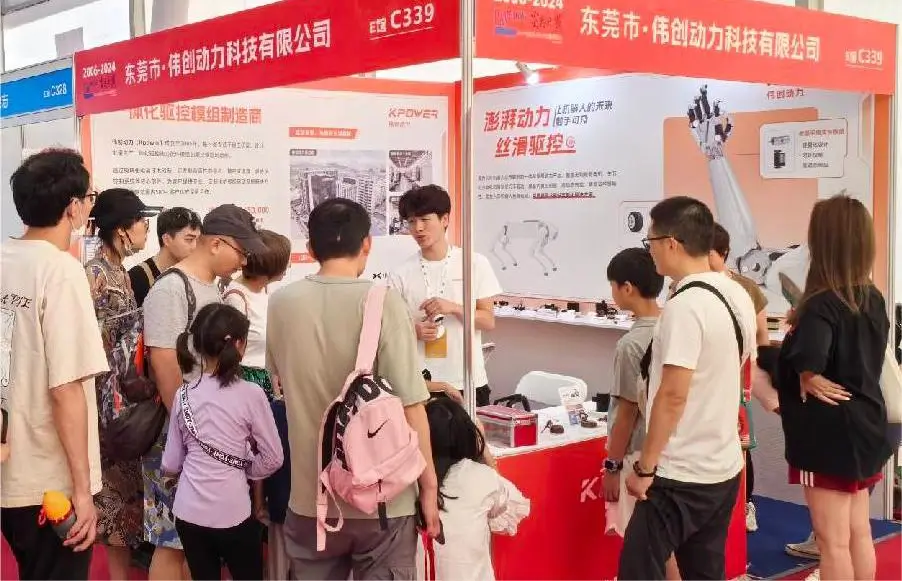The Rise of the Brushless DC Servo Motor: Redefining Precision and Efficiency
In the world of modern engineering and automation, the quest for speed, precision, reliability, and energy efficiency never ceases. Among the technological marvels that have emerged to meet these demands, the brushless DC servo motor stands out as a game-changer. Known for its superior performance and durability, this type of motor has revolutionized how machines achieve intricate movements and high-precision positioning across diverse industrial sectors.

What is a Brushless DC Servo Motor? At its core, a brushless DC (BLDC) servo motor is an electric motor designed for precise control of angular position, velocity, and torque. Unlike traditional brushed motors, it eliminates brushes and commutators—components susceptible to wear and tear—replacing them with electronic commutation. This fundamental design shift offers multiple advantages, from reduced maintenance to higher efficiency.
A typical BLDC servo motor comprises a stator with multiple windings and a rotor embedded with permanent magnets. When controlled via advanced electronic drives, the motor can achieve smooth, rapid, and highly accurate responses. These features make it ideal for applications demanding tight control and reliable performance.
Why are Brushless DC Servo Motors Gaining Traction? The appeal of BLDC servo motors lies primarily in their efficiency, longevity, and precision. Manufacturing processes have improved, resulting in more compact, lightweight designs that pack impressive power. Moreover, their lack of brushes means less mechanical wear and less electromagnetic interference—a boon for sensitive electronic systems.
The ecological benefits are significant too; with minimal energy wastage and fewer replacement parts, they support more sustainable manufacturing practices. Industries ranging from aerospace and robotics to CNC machinery and medical devices are increasingly adopting BLDC servo motors to attain higher levels of automation and precision.
Design Components and Features To appreciate the sophistication of BLDC servo motors, we need to understand their key design elements:
Permanent Magnets: Embedded in the rotor, these magnets generate a magnetic field essential for motor operation. The quality and arrangement of these magnets impact the motor’s torque and speed capabilities.
Stator Windings: These are electromagnetic coils that, when energized, create a rotating magnetic field. Precise control of these fields is central to the motor's motion coordination.
Electronic Drive: The brain behind the operation, this unit supplies the controlled current to the windings and manages commutation sequences. Modern drives often incorporate advanced algorithms like Field-Oriented Control (FOC) to optimize performance.
Sensors: Hall-effect sensors or resolvers frequently work in tandem with BLDC servo motors to provide real-time feedback about shaft position, enabling precise adjustments for effective control.
Functionality and Control One key advantage of the brushless design is the ability to implement sophisticated control methods. Servomechanisms employ closed-loop feedback systems, which constantly monitor the motor's output and make real-time adjustments. This results in smooth acceleration, high positional accuracy, and quick response times—even under varying loads.
By leveraging digital signal processors (DSPs) and microcontrollers, engineers can customize motor behavior down to the finest detail. From simple on/off controls to complex multi-axis operations in robotics, BLDC servo motors exhibit remarkable versatility and adaptability.
Applications Leading the Charge The modern industrial landscape showcases an expanding usage palette for BLDC servo motors. For example:
Robotics: From robotic arms executing delicate assembly tasks to autonomous mobile robots, BLDC servos provide the precise control necessary for complex movements.
Aerospace: In aircraft actuation systems and satellite positioning, their reliability under extreme conditions makes them ideal.
Manufacturing Equipment: CNC machines and 3D printers rely on these motors for positional accuracy, ensuring consistent quality.
Medical Devices: Precise and smooth motions are critical for surgical robots and imaging equipment.
Automated Warehousing: These motors enable fast, accurate movements for sorting, packaging, and transportation systems.
Advantages Over Traditional Systems What truly sets BLDC servo motors apart are their cumulative benefits:
Enhanced Efficiency: With no brushes to create friction and mechanical losses minimized, energy conversion efficiency often exceeds conventional brushed motors.
Lower Maintenance: Absence of brushes means less wear and tear, leading to significant savings in maintenance and downtime.
Greater Durability: Rugged construction and high-quality materials extend operational life, especially in harsh environments.
Superior Speed and Torque: Precise electronic control allows for rapid acceleration and deceleration, making them suitable for dynamic applications.
Quiet Operation: Reduced mechanical vibrations and no sparks contribute to quieter machinery.
The Future of Brushless DC Servo Motors
As industries continue evolving toward increased automation and smarter machines, BLDC servo motors are positioned as essential components on this journey. Advances in materials science, control algorithms, and sensor technology promise even greater efficiency, miniaturization, and integration capabilities.
Emerging trends include:
Integration with IoT: Real-time data collection and remote diagnostics enhance predictive maintenance.
Artificial Intelligence: Adaptive control systems optimize performance dynamically, learning from operational patterns.
Energy Harvesting: Futuristic systems where BLDC motors recover energy during operation, boosting overall efficiency.
In conclusion, the brushless DC servo motor embodies the pinnacle of modern motor technology—combining high performance with long-term reliability. Its role as the backbone of industrial automation and robotics underscores a future where machinery is smarter, faster, and more precise than ever before.
Established in 2005, Kpower has been dedicated to a professional compact motion unit manufacturer, headquartered in Dongguan, Guangdong Province, China.




































